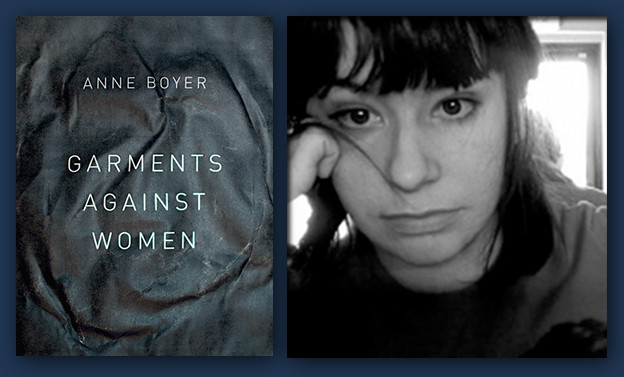Motley attire
A review of Anne Boyer's 'Garments Against Women'

Garments Against Women
Garments Against Women
If someone asked me how I would envision a garment against women, it would not be too difficult for me to respond. I would suggest something steel and hidebound, an I-beam with little to offer the imagination. It might be a dark cesspool of factory life, much as Marx would have written about in the nineteenth century. It might be a hairshirt or a black mirror that promises no future. In one sense, Anne Boyer’s Garments Against Women captures this, but in another sense, it is a book that talks with a sense of hope about what the world could be. In both senses, it is cleverly written and in touch with the details of a life spent working, hence filtered through a Marxist lens and full of the material world as much as a way of seeing escapes from the daily as part of the author’s horizon.
There is so much to say about this excellent book that I am sure to leave something out. The book begins with a section called “The Animal Model of Inescapable Shock,” which relives in prose Stockholm syndrome and other related tortures. Boyer writes: “If an animal is shocked, escapably or inescapably, she will manifest deep attachment for whoever has shocked her” (1). She writes about an electrified grid, and this sets the tone for what may prove to include commentary on today’s mediatized culture, the modernity that is still with each one as we use computers and other machines. A somber beginning. For Boyer, there is no end: “where is the edge of the electrified grid?” (2) she wonders, mentioning Capital for the first time.
In “1. the open book,” Boyer writes of transparency and its failings, and of its necessity, if one is compelled to believe in such things. She says that “[i]t’s only necessary to make a transparent account if it’s necessary to have accounting, and it’s only necessary to have accounting in the service of a profitable outcome.”[1] We get a sense that this book is motivated by subversions of political economy, in the sense that mediated economy is ever-present in parts of our lives, and Boyer does this with craft and sagacity. She writes that “[w]ithout an open book, she would, following her assumed desire, steal, so that she makes a transparent account always first in some service of that larger body that is the order of business” (34). This book is about the machinations of business and what life could look like outside of them, but can we really imagine our lives outside of that particular economy? It’s doubtful, but Boyer does a fine job of toeing that line that so many would like to see achieved, all the while making us wonder what else there is.
Boyer’s style propels this book through its many memories and musings. She wonders innocently what makes a person write; she describes with incredible thoughtfulness her answer to this question; she discusses writing-conditioned sicknesses; she meditates on topics as various as sharks, information culture, poverty, reading, sex, food, and poetry. (Boyer has published many collections of poetry of varying length.) This book is original and topic-driven, with sections on “At Least Two Types of People” (can you guess?) and sewing, among other various sections. I think the strength of this book is in its motley sense. Boyer is able to tie together with an astute sensibility the many parts of her life that connect with others. She does this imaginatively, and the book does not read as a confession of facts for the most part. She creates herself, and writes of herself, in a style that is graceful and sometimes dialectical, saying, “I am not writing a history of these times or of past times or of any future times and not even the history of these visions which are with me all day and all of the night” (43).
She goes into detail about not writing (which is, surprisingly, writing), and she tells of books she would write and is but not at all writing. She gives us science fiction, reveries, and memoirs that include details of her daughter’s life, but without the sincerity that would cause us to be certain the details are “true.” And we have throughout this book the play of the self, making it a memoir but not the least a highly stylized, romantic one. As Rousseau and Wollstonecraft both make appearances here, I think the strength and charm of Boyer’s prose is her ability to create first-generation feminism all over again, leaving us to wonder whether she was hinting at the second- and third-generation themes in the poem with which the poet ends the book: “a catalogue of whales that is a catalogue / of whale bones inside a catalogue of garments / against women that could never be a novel itself” (86). Yet, as with all of Boyer’s writing, it is a novel approach that is taken throughout the book.
1. Anne Boyer, “1. the open book,” www.anneboyer.com, January 2, 2012.